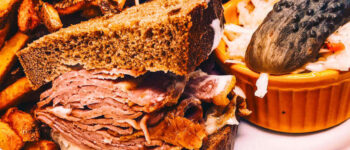There is something rustic and time-honored about pulled pork. When you make pulled pork right, it’s juicy, and people will talk about it for days. Your guests will come back for 2nds and 3rds! But when you read recipes about pulled pork, there seems to be some disagreement on the best temperature for cooking this meat to perfection.
First, let me say that pulled pork will require some patience on your part. You can’t just set the smoker to 350 and get things done quickly. You won’t be happy with the results. So, I am going to take a closer look at which internal temperature makes the best-pulled pork – 190 F vs. 205.
Hint: It can be both.
What Exactly is Pulled Pork?
When you combine salty, smoky, tender, and juicy, you really can’t go wrong. Add sauce if you wish, and sandwiches await you. Pork shoulder seems as if someone created it specifically for smoking in dishes like this. The alternative would be Boston butt.
Preparing the Meat for the Smoker
Trim Excess fat. Rub the exterior with a barbecue seasoning blend. Make sure to get it on easily. Here are some ideas from our pantry.
Cuso Seasonings for Pork
Currently, we have 10 select seasonings, some of which make a great addition to your pork. Just rub em’ on and let the smoker do the rest.
* Cuso’s Hot Honey Seasoning: Heat meets sweet; pair with poultry or fish
* Cuso’s Maple Bourbon Seasoning: Caramel notes, savory; fantastic on pork and salmon
* Cuso’s Smokey Garlic Buffalo Seasoning: Rich smoky garlic; Gives the pork a little zing.
See more : All 9 Popeyes Sauces, Ranked From Best to Worst
* Cuso’s Tequila Lime Habanero A Taste of the Tropics: brighten up the meat and gives it a distinctively unique flavor profile.
Put it into your smoker.
But here comes the tricky part. Some people who smoke meat claim that pulled pork is best when it reaches 190 F and others 205 F.
Pulling Pork at 190 °F
How long is long enough? Your neighbor, the barbecue “expert,” tells you adamantly that 190 is the ideal internal temperature. The pork is lightly pink, tender, juicy, and flavorful.
They start up the smoker at 225, monitoring the temperature. Spritz a little apple cider vinegar on the meat periodically. When the pork reaches 150, it gets wrapped in aluminum foil to keep in the juices. When the pork is 190 F, it comes off the grill to rest for 30 minutes (no peeking). It’s now ready to shred.
Pulling Pork at 205°F
When you cook beyond 190, there is always the chance your meat will be overdone or taste too heavily of smoke. 205 represents the highest acceptable internal temperature for pulled pork. The pit master has to keep a close eye on the meat, so it doesn’t turn into leather.
As with the 190 F goal, wrap the meat at 150. This adds a layer of protection, helping keep the meat from overcooking.
Key Differences between 190 F and 205 F
- Both temperatures create juicy, flavorful meat.
- The pork cooked to 205 risks overcooking and has no pink meat.
- Pork at the 190 mark will never be dry. 205 risks losing some of that succulence.
You know when you make pulled pork, folks will love it. Remember the mantra of temperature, temperature, temperature. You can try cooking the pork both ways and see which you prefer.
PitMaster’s Memo: Pulled Pork Trivia
- The name “pulled pork” comes from the way in which it’s treated after cooking. Instead of slicing, you pull the meat apart. It shreds up the pork while also tenderizing the meat.
- If the weather is inclimate, you can make your pulled pork in the oven or a slow cooker. If you toss in your sauce or seasonings in the slow cooker, your end up with rich flavors and a great texture.
- Various regions in the US flavor their pulled pork differently. Vinegar and spice sauces appear in the Carolinas, Texans like brown sugar and molasses. And this recipe of mine, using it in macaroni and cheese.
- Many recipes call for Hickory or Maple smoking wood for the process. For a more moderate flavor, think about oak and fruit woods.
Sides
Corn fritters
See more : When To Wrap Pork Butt?
Fruit salad
Green beans with bacon
Succotash
Wilted greens
Beverages
American pale ale
Cider
Cuso’s Maple Bourbon Old Fashioned
John Collins
Pineapple sangria
Nigel Gildon editor:Nigel Gildon is the editor of Chef Wayne’s Big Mamou: Chef Wayne’s Big Mamou. He has worked in the publishing industry for many years and has a passion for helping new authors get their work into the hands of readers. 63 Liberty Street * Springfield, MA 01003






